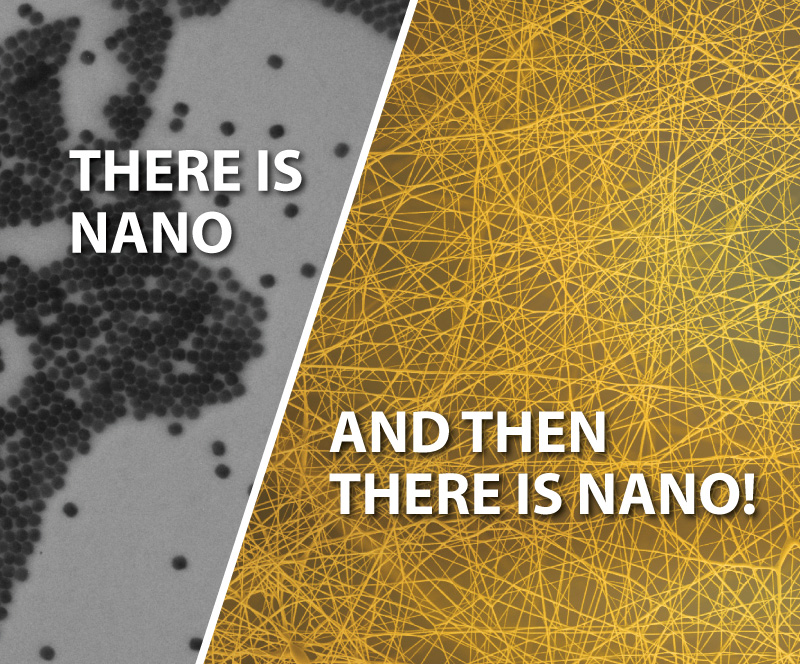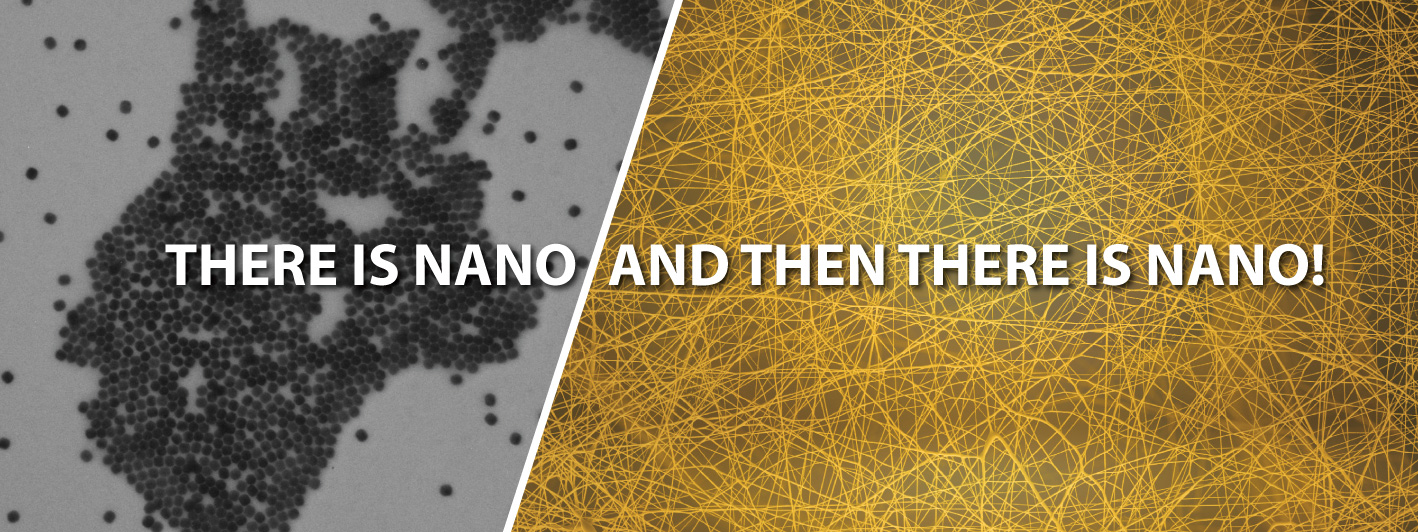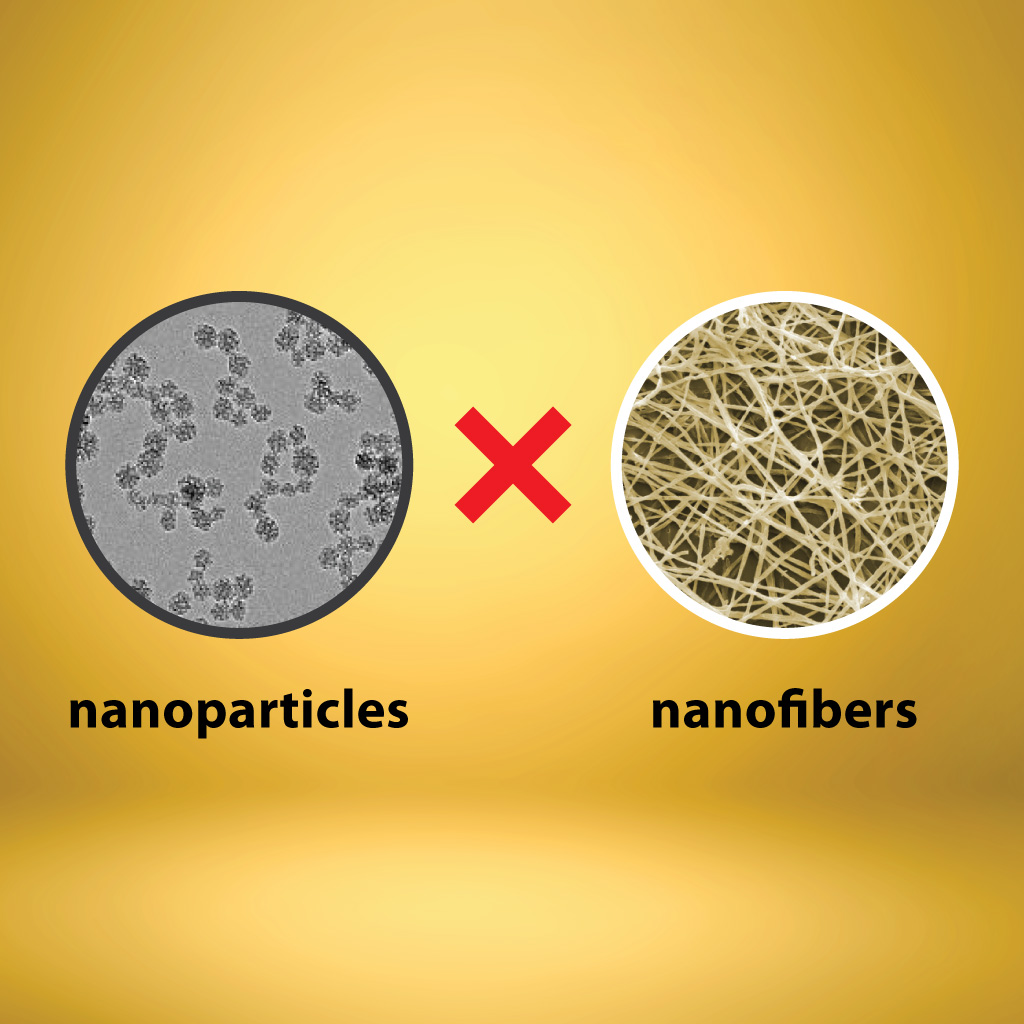

Nanofiber and nanoparticles. Do they sound similar to you? If so, you’re not alone. Although they often appear side-by-side in texts, don’t be fooled – they have very little in common. What do they really mean, and what properties do they have? Read on to find out!
There is nano… and then there is nano
As mentioned above, nanofibers are often lumped together with nanoparticles—despite the fact that the terms refer to different things with completely different properties and uses. Nanoparticles find uses mainly in pharmaceuticals, chemistry, and robotics; whereas nanofibers are used in air filtration, medicine, air barriers, cosmetics, and in the textile industry.
One of the main and most prominent differences is their effect on human health. Nanoparticles may, in some cases, pass through the nasal mucosa and then, through the olfactory nerve, travel all the way to the brain. As a consequence, they can cause heart or lung problems. On the other hand, the nanofibers in diverse products promote human health. They act as a barrier to block harmful miniscule particles, bacteria and viruses.
Microscopic nanoparticles
The drawback of nanoparticles on human health lies in their size – they are so small, they can permeate the body’s defenses. In terms of health and environment we distinguish between two kinds of nanoparticles: those that are chemically engineered, and those that are byproducts of human activity, such as diesel exhaust.
Yet both kinds can cause cancer and oxidative stress. Again, due to their size, they may pass through the blood-brain barrier and contribute to various diseases such as Parkinson’s or Alzheimer’s.

Did you know…
that approx. 40% of proteins in the human body are collagen with a nanofiber structure?

The benefits of nanofiber
Technically, nanofiber has a great many beneficial properties, because nanofibers can be a hundred times thinner than ordinary textile fibers. Thanks to this, their properties have found great use in medicine, filtration, catalytical reactions, etc.
Nanofibers have a great future ahead of them in practically all industries. They can be used in advanced textiles which will repair themselves, or in wound dressings which will respond to a person’s given health status. Or in drug delivery systems which will reduce patients’ need to take tablets daily down to once a week.
The main difference between nanofiber and nanoparticles then lies not only in their shape, but also in their uses and the effects they exert on human health.
.png)